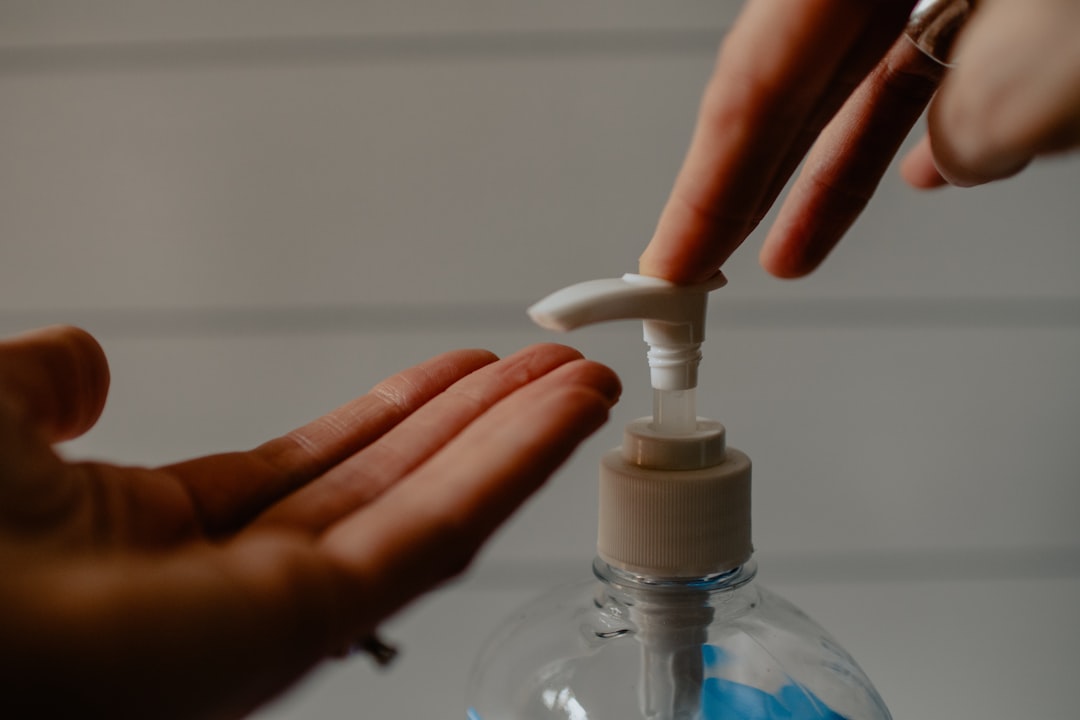Moisturizer is a crucial part of any skincare routine, as it helps to keep the skin hydrated and healthy. Our skin is constantly exposed to environmental factors such as pollution, UV rays, and harsh weather conditions, which can lead to dryness and damage. Using a moisturizer helps to create a barrier on the skin, locking in moisture and preventing water loss. This not only keeps the skin looking and feeling soft and smooth but also helps to maintain its natural protective barrier. In addition to hydration, moisturizers can also contain beneficial ingredients such as antioxidants, vitamins, and SPF, which can further protect and nourish the skin.
Furthermore, using a moisturizer regularly can help to prevent common skin issues such as flakiness, dullness, and premature aging. When the skin is well-hydrated, it is more resilient and better able to repair and renew itself. This can lead to a more youthful and radiant complexion. In addition, moisturizer can also help to soothe and calm irritated or sensitive skin, reducing redness and inflammation. Overall, incorporating a moisturizer into your daily skincare routine is essential for maintaining healthy, glowing skin.
Summary
- Moisturizer is essential for keeping the skin hydrated and healthy
- Choose a moisturizer that suits your skin type, whether it’s oily, dry, or combination
- Prepare your skin by cleansing and exfoliating before applying moisturizer
- When applying moisturizer to your face, use gentle, upward motions to avoid tugging on the skin
- Apply moisturizer to your body immediately after showering to lock in moisture
Choosing the Right Moisturizer for Your Skin Type
When it comes to choosing a moisturizer, it’s important to consider your skin type and specific concerns. There are various types of moisturizers available, including creams, lotions, gels, and oils, each designed for different skin types. For those with dry or mature skin, a rich and nourishing cream or oil-based moisturizer is ideal, as it provides intense hydration and helps to replenish the skin’s natural oils. On the other hand, those with oily or acne-prone skin may benefit from a lightweight, non-comedogenic lotion or gel moisturizer that won’t clog pores or exacerbate oiliness.
It’s also important to look for moisturizers that contain beneficial ingredients tailored to your skin’s needs. For example, those with sensitive skin may benefit from a fragrance-free and hypoallergenic formula, while those concerned with aging may look for moisturizers containing anti-aging ingredients such as retinol or hyaluronic acid. Additionally, it’s important to consider any specific skin concerns you may have, such as acne, hyperpigmentation, or rosacea, and choose a moisturizer that addresses these issues. Ultimately, finding the right moisturizer for your skin type and concerns is essential for achieving the best results.
Preparing Your Skin for Moisturizer Application
Before applying moisturizer, it’s important to prepare your skin to ensure maximum absorption and effectiveness. The first step is to cleanse your skin thoroughly to remove any dirt, oil, or makeup that may be sitting on the surface. This allows the moisturizer to penetrate the skin more effectively and prevents any barrier from forming that could hinder absorption. After cleansing, it’s also beneficial to use a toner to balance the skin’s pH levels and remove any remaining impurities.
Exfoliating the skin regularly can also help to prepare it for moisturizer application by removing dead skin cells and allowing the moisturizer to penetrate more deeply. This can be done using a physical exfoliant such as a scrub or a chemical exfoliant containing ingredients like alpha hydroxy acids (AHAs) or beta hydroxy acids (BHAs). Additionally, using a serum before applying moisturizer can provide targeted treatment for specific skin concerns such as fine lines, hyperpigmentation, or dehydration. By preparing your skin properly before applying moisturizer, you can ensure that it receives the full benefits of the product.
Applying Moisturizer to Your Face
When applying moisturizer to your face, it’s important to use the right technique to ensure even coverage and maximum absorption. Start by taking a small amount of moisturizer and warming it between your fingertips. This helps to emulsify the product and makes it easier to spread across the skin. Then, gently press the moisturizer onto your skin using upward and outward motions. Avoid tugging or pulling on the skin, as this can contribute to premature aging and sagging.
Pay special attention to areas that tend to be drier or more prone to wrinkles, such as the cheeks, forehead, and around the eyes. Be sure to also apply moisturizer to your neck and décolletage, as these areas are often neglected but can show signs of aging just as much as the face. If you’re using a separate eye cream, apply it before your moisturizer to target the delicate eye area specifically. Finally, allow the moisturizer to fully absorb into the skin before applying any makeup or sunscreen on top.
Applying Moisturizer to Your Body
In addition to moisturizing your face, it’s important to also pay attention to the rest of your body. After showering or bathing, when the skin is still slightly damp, apply a generous amount of body moisturizer all over. This helps to lock in moisture and keep the skin hydrated throughout the day. Pay extra attention to areas that tend to be drier such as elbows, knees, and heels. For those with very dry or rough skin, using a thicker body butter or cream can provide more intense hydration.
When applying body moisturizer, take the time to massage it into the skin using circular motions. This not only helps with absorption but also promotes circulation and can improve the overall texture and tone of the skin. If you have specific concerns such as stretch marks or cellulite, look for targeted treatments that can help to address these issues. By incorporating body moisturizer into your daily routine, you can keep your skin soft, smooth, and healthy from head to toe.
Additional Tips for Maximizing Moisturizer Benefits

In addition to regular application of moisturizer on both your face and body, there are several additional tips that can help maximize its benefits. Firstly, staying hydrated by drinking plenty of water is essential for maintaining healthy and hydrated skin from within. A balanced diet rich in fruits, vegetables, and healthy fats can also support overall skin health and improve its appearance.
Furthermore, protecting your skin from sun damage by using sunscreen daily is crucial for preventing premature aging and maintaining the effectiveness of your moisturizer. Sun exposure can lead to dryness, wrinkles, and pigmentation issues that can undermine the benefits of your skincare routine. Lastly, getting enough sleep is important for allowing your skin to repair and regenerate itself overnight. By incorporating these additional tips into your routine alongside regular moisturizer application, you can achieve optimal results for healthy and radiant skin.
Common Mistakes to Avoid When Applying Moisturizer
While using moisturizer is an essential part of any skincare routine, there are some common mistakes that should be avoided in order to get the most out of your products. One common mistake is using too much or too little moisturizer. Using too much can lead to a greasy or heavy feeling on the skin, while using too little may not provide enough hydration. It’s important to find the right balance based on your individual skin type and needs.
Another mistake is not allowing enough time for the moisturizer to fully absorb into the skin before applying makeup or other products on top. This can lead to pilling or an uneven application of subsequent products. Additionally, using a moisturizer that is not suitable for your specific skin type can lead to issues such as clogged pores or increased oiliness. It’s important to choose a moisturizer that is tailored to your individual needs.
Finally, neglecting areas of the body that also require moisture such as the neck, hands, and feet is a common mistake that can lead to uneven skin texture and premature aging in these areas. By being mindful of these common mistakes and adjusting your skincare routine accordingly, you can ensure that you are getting the most out of your moisturizer for healthy and beautiful skin overall.
Discover the importance of understanding your skin type and how to personalize your skincare routine in our related article “Understanding Your Skin Type: A Guide to Personalized Skincare.” This insightful piece delves into the different skin types and offers valuable tips on tailoring your skincare regimen to suit your individual needs. Understanding your skin type is crucial for achieving optimal results when applying moisturizer and other skincare products.
FAQs
What is the correct way to apply moisturizer?
The correct way to apply moisturizer is to start with a clean face, take a small amount of moisturizer and gently massage it into your skin using upward and outward motions. Be sure to cover your entire face and neck, and allow the moisturizer to fully absorb before applying any makeup.
How much moisturizer should I use?
You should use a pea-sized amount of moisturizer for your face and neck. Using too much moisturizer can lead to clogged pores and a greasy feeling, so it’s important to use a small amount and add more if needed.
When should I apply moisturizer?
You should apply moisturizer twice a day, in the morning and evening, after cleansing your face. It’s important to apply moisturizer to damp skin to lock in moisture, so it’s best to apply it immediately after washing your face or taking a shower.
Can I use moisturizer on oily skin?
Yes, even if you have oily skin, it’s important to use a moisturizer to keep your skin hydrated. Look for oil-free or non-comedogenic moisturizers that won’t clog your pores, and apply a small amount to avoid adding excess oil to your skin.
Should I use different moisturizers for day and night?
It’s not necessary to use different moisturizers for day and night, but some people prefer to use a lighter moisturizer during the day and a heavier, more hydrating moisturizer at night. Ultimately, it depends on your skin type and personal preference.




